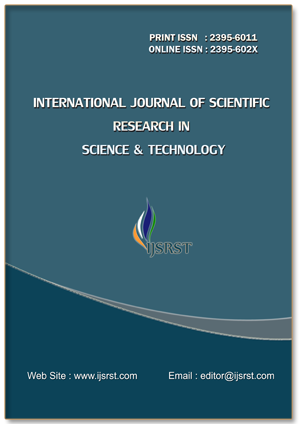Plate Tectonic Theory and Its Geological Implications - A Review of Some Recent Studies
Keywords:
Plate Tectonic Theory, Modern Geology, GeodynamicsAbstract
The Plate Tectonic Theory is a cornerstone of modern geology, explaining the dynamic processes that shape the Earth’s surface through the movement of rigid lithospheric plates. This theory has led to profound insights into the formation of geological structures, earthquake distribution, volcanic activity, and the rock cycle. Recent advancements in technology, such as GPS, satellite imagery, and deep-sea exploration, have allowed scientists to refine the understanding of plate movements and interactions. This paper reviews recent studies that contribute to the ongoing evolution of the Plate Tectonic Theory, with a focus on new discoveries related to plate boundaries, seismic activity, and mantle dynamics. Notable studies have provided deeper insights into the mechanisms driving plate motion, the creation of mountain ranges through continental collisions, and the role of hotspots in volcanic activity. The geological implications of these findings include a better understanding of the Earth’s interior and its geodynamic processes. Despite significant progress, challenges remain in fully understanding the intricacies of plate movements, particularly at subduction zones and within the mantle. The paper concludes by highlighting future research directions and the importance of interdisciplinary approaches in advancing the field, emphasizing the need for further exploration to address unresolved questions in Earth sciences.
Downloads
References
Desikachar, S. V. (1974). A review of the tectonic and geological history of eastern India in terms of'plate tectonics' theory. Journal Geological Society of India, 15(2), 137-149.
Dickinson, W. R. (1971). Plate Tectonics in Geologic History: New global tectonic theory leads to revised concepts of geosynclinal deposition and orogenic deformation. Science, 174(4005), 107-113.
Faccenda, M., & Capitanio, F. A. (2013). Seismic anisotropy around subduction zones: insights from three-dimensional modeling of upper mantle deformation and SKS splitting calculations. Geochemistry, Geophysics, Geosystems, 14(1), 243 - 262.
Falvey, D. A. (1974). The development of continental margins in plate tectonic theory. The APPEA Journal, 14(1), 95-106.
Mahatsente, Rezene. (2017). Global Models of Ridge-Push Force, Geoid, and Lithospheric Strength of Oceanic plates. Pure and Applied Geophysics. 174. 10.1007/s00024-017-1647-2.
Miller, Stephen. (2013). The Role of Fluids in Tectonic and Earthquake Processes. Advances in Geophysics. 54. 1-46.
Müller, R. D., Zahirovic, S., Williams, S. E., & Cannon, J. (2019). A global plate model including lithospheric deformation along major rifts and orogens since the Triassic. Tectonics, 38(6), 1884-1907.
Niu, Y. (2014). Geological understanding of plate tectonics: Basic concepts, illustrations, examples and new perspectives. Global tectonics and metallogeny, 10(1).
Palin, R. M., & Santosh, M. (2021). Plate tectonics: What, where, why, and when?. Gondwana Research, 100, 3-24.
Wang K, Hu Y, He J. Deformation cycles of subduction earthquakes in a viscoelastic Earth. Nature. 2012 Apr 18;484(7394):327-32. doi: 10.1038/nature11032. PMID: 22517160.
Zheng, Y. F. (2023). Plate tectonics in the twenty-first century. Science China Earth Sciences, 66(1), 1-40.
Downloads
Published
Issue
Section
License
Copyright (c) 2024 International Journal of Scientific Research in Science and Technology

This work is licensed under a Creative Commons Attribution 4.0 International License.




